Related Research Articles

Cadillac Ranch is a public art installation and sculpture in Amarillo, Texas, US. It was created in 1974 by Chip Lord, Hudson Marquez and Doug Michels, who were a part of the art group Ant Farm.
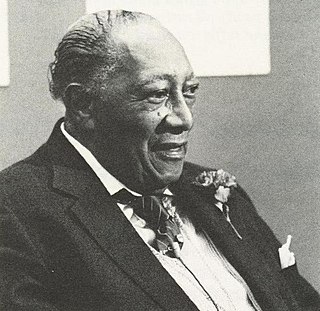
James Augustus Van Der Zee was an American photographer best known for his portraits of black New Yorkers. He was a leading figure in the Harlem Renaissance. Aside from the artistic merits of his work, Van Der Zee produced the most comprehensive documentation of the period. Among his most famous subjects during this time were Marcus Garvey, Bill "Bojangles" Robinson and Countee Cullen.
Stanley Marsh 3 was an American artist, businessman, philanthropist, and prankster from Amarillo, Texas. He is perhaps best known for having been the sponsor of the Cadillac Ranch, an unusual public art exhibit off historic Route 66, now Interstate 40, west of Amarillo.
David Goldblatt HonFRPS was a South African photographer noted for his portrayal of South Africa during the period of apartheid. After apartheid had ended he concentrated more on the country's landscapes. What differentiates Goldblatt's body of work from those of other anti-apartheid artists is that he photographed issues that went beyond the violent events of apartheid and reflected the conditions that led up to them. His forms of protest have a subtlety that traditional documentary photographs may lack: "[M]y dispassion was an attitude in which I tried to avoid easy judgments. . . . This resulted in a photography that appeared to be disengaged and apolitical, but which was in fact the opposite." He has numerous publications to his name.
David Doubilet is an underwater photographer known primarily for his work published in National Geographic Magazine where he is a contributing photographer and has been an author for 70 feature articles since 1971. He was born in New York City and started taking photos underwater at the young age of 12. He started with a Brownie Hawkeye in a rubber anesthesiologist's bag to keep the water out of the camera. He lived with his family in New York City and spent summers in Elberon New Jersey exploring the Atlantic. He later worked as a diver and photographer for the Sandy Hook Marine Laboratories in New Jersey and spent much of his youth in the Caribbean as a teenage dive instructor in the Bahamas where he found his motivation to capture the beauty of the sea and everything in it. His wife is the photographer Jennifer Hayes.
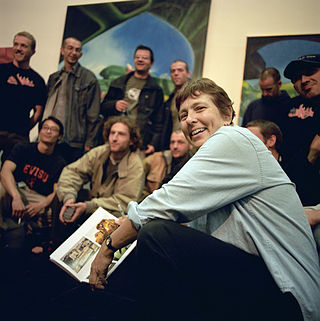
Martha Cooper is an American photojournalist. She worked as a staff photographer for the New York Post during the 1970s. She is best known for documenting the New York City graffiti scene of the 1970s and 1980s.
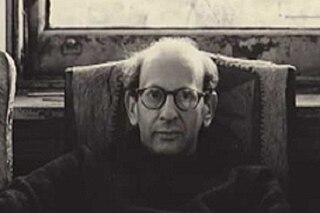
Marvin Israel was an American artist, photographer, painter, teacher and art director from New York City known for modern/surreal interiors, abstract imagery. Israel created sinister shadowy and exuberant interiors with implications of violence that were often sexual in nature.
Mark Alan Seliger is an American photographer noted for his portraiture. From 1992 to 2002, he was Chief Photographer for Rolling Stone, during which time he shot over 188 covers for the magazine. From 2002 to 2012 he was under contract with Condé Nast Publications for GQ and Vanity Fair and has shot for numerous other magazines. Seliger has published a number of books, including When They Came to Take My Father: Voices of the Holocaust, Physiognomy, and On Christopher Street: Transgender Stories, and his photographs are included in the permanent collections of the National Portrait Gallery at the Smithsonian Institution, the Museum of Fine Arts in Houston, and the National Portrait Gallery in London. He has done advertising work for Adidas, Amazon, Anheuser-Busch, Apple, Dom Pérignon, Fila, Gap, HBO, Hourglass Cosmetics, Hulu, KITH, Lee Jeans, Levi's, McDonald's, Netflix, Ralph Lauren, Ray-Ban, Rolex, Showtime, Sony, Universal and Viacom, among others. He is also the lead singer of the country band Rusty Truck.
Jürgen Schadeberg was a German-born South African photographer and artist. He photographed key moments in South African history, including iconic photographs such as Nelson Mandela at Robben Island prison. He also lived, worked and taught in London and Spain, and photographed in many African countries.
Ernest Levi Tsoloane Cole was a South African photographer. In the early 1960s, he started to freelance for clients such as Drum magazine, the Rand Daily Mail, and the Sunday Express. This made him South Africa's first black freelance photographer.

Barbara Morgan was an American photographer best known for her depictions of modern dancers. She was a co-founder of the photography magazine Aperture.
Anthony Barboza is a photographer, historian, artist and writer. With roots originating from Cape Verde, and work that began in commercial art more than forty years ago, Barboza's artistic talents and successful career helped him to cross over and pursue his passions in the fine arts where he continues to contribute to the American art scene.
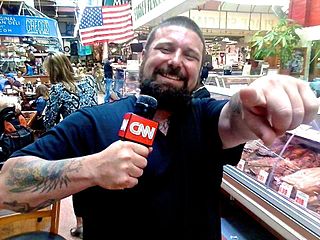
Brian Nobili is an American street photographer and videographer.

Charles Robert Gatewood was an American photographer, writer, videographer, artist and educator, who lived and worked in San Francisco, California.

The Quin is a luxury hotel in New York City. It is located on 57th Street and Sixth Avenue in Midtown Manhattan, two blocks south of Central Park.
Virginia Maksymowicz is an American artist whose sculptural installations incorporate a variety of media. She lives in Philadelphia, PA and is married to artist-photographer, Blaise Tobia.
CETA Artists Project (1977–1980) in New York City employed approximately 500 accomplished but underemployed artists in five programs, the largest of which was the Cultural Council Foundation (CCF) Artists Project. The project was funded under the Comprehensive Employment and Training Act (CETA) (1974–80) when more than 10,000 artists – visual, performing, and literary – were employed nationally. This was the largest number of artists supported by Federal funding since the Works Progress Administration of the 1930s.
Leland Bobbé is an American photographer known for commercial portraiture and for personal work capturing fringe elements of society. He has made portraits of burlesque performers and drag queens; and street photography in New York City’s Times Square and the Bowery in the mid-1970s, eighteen of which are in the collection of the Museum of the City of New York.
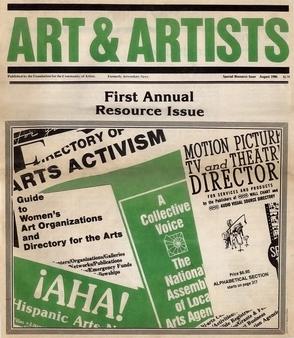
Art Workers News, also known as Art & Artists, was the highly influential artist-run publication of the Foundation for the Community of Artists (FCA), an organization that grew out of the National Art Workers Community. From 1971 to 1989, the publication was the paper of record for the world of working artists. Its circulation reached a high of 40,000 subscribers.
CETA Employment of Artists(1974–1981) refers to the Comprehensive Employment and Training Act (CETA), which federally employed more than 10,000 artists – visual, performing, and literary – during a span of eight years. This was the largest number of artists supported by Federal funding since the Works Progress Administration (WPA) of the 1930s. It is estimated that an additional 10,000 arts support staff were funded as well. During its peak year, 1980, CETA funding for arts employment funneled up to $300 million into the cultural sector – and the economy – of the United States. In comparison, the National Endowment for the Arts budget that year was $159 million.
References
- ↑ Genocchio, Benjamin (2008-04-27). "Married to Art and to Each Other". The New York Times. ISSN 0362-4331 . Retrieved 2016-05-26.
- ↑ Cultural Council Foundation Artists Project : on the identification and utilization of largely untapped resources, NYC: CCF, 1980.
- ↑ NYC Department of Records and Information Services
- ↑ Burns, Kahn, Carol, Andrea (2005). Site Matters Design Concepts, Histories and Strategies. Psychology Press. p. 13. ISBN 0415949750.
- ↑ Artists' Magazines: An Alternative Space for Art, Gwen Allen, MIT Press, 2011, p. 240
- ↑ IKON Magazine: Art Against Apartheid/Works for Freedom, NYC: Political Art Documentation/ Distribution, [ permanent dead link ]
- ↑ "ARTIST CALL- Against U.S. Intervention". NACLA. Retrieved 2016-05-26.
- ↑ Upfront #10, Lippard, Perr, Sutherland and Wexler, editors, Spring 1985
- ↑ "Art in the 1980s: The Forgotten History of PAD/D". Hyperallergic. 2014-04-17. Retrieved 2016-05-26.
- ↑ "Tobia". Archived from the original on 2016-06-07. www.phl.org Retrieved 2016-5-25
- ↑ "Blaise Tobia" (PDF). colettecopeland.com Retrieved 2016-5-25